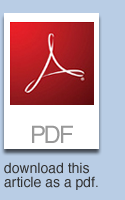
Start Your Task Force
on the
High Performance Track
Based on their experience with task forces, some organizations swear by them and others at them. The difference between success and sorrow is often determined by two things: how the team is established, and how the members work together.
What Is a Task Force?
A task force is a small group, usually four to twelve people, that brings together a specific set of skills to accomplish a short-term task. It may be called a "project team" or a "working group." But by whatever name, a task force exists for a specific, time-limited purpose, usually lasting a few months to a year. Often its members come from different parts of an organization, such as various functional units or divisions, and different levels, ranging from line staff to management. Individuals are selected for their expertise, their history in the organization, and their interest in the project. Drawing from this varied pool enhances the project's chances for success because the group’s members:
- bring together different skills and ideas,
- become the project's advocates within the organization,
- squelch rumors about the project,
- foresee potential hurdles to implementation and build solutions into their recommendations.
When to Use a Task Force
Some projects benefit greatly from the advantages of a task force, while others may not justify the effort. A task force is often essential when the project involves complex or thorny issues, or when solutions will require organizational change. The involvement of staff brings multiple perspectives to the table and can "grease the wheels" for implementation. The buy-in a task force generates can be especially valuable when the outcome affects people deeply, is emotionally charged, or impacts a large part of the organization.
Charting the Course for Success
In our experience, task forces often stumble because leadership overlooks two critical elements before the project gets started. The first is the need for a Team Charter. It can be as brief as a page or two, but should include:
- the purpose and objectives of the project,
- the roles and responsibilities of the task force, as well as others involved in the project (project manager, top management, consultants, etc.),
- a list of tasks and expected work products,
- the overall project timeline, and
- the resources that will be made available.
The second is making task force members available to do the work. Management needs to ensure that they have the time and, if necessary, their supervisor's support to delay their normal work tasks or delegate some of their duties to others while they serve.
Avoiding the Start-Up Pitfalls
According to Bruce Tuckman, Ph.D., teams develop through the following four stages:
Forming. Team members identify their similarities, expectations, resources and skills. They agree on a common purpose.
Storming. The team works out its processes, roles, and resource needs. Members deal with their differences and communication issues. Fundamental questions about the task force's purpose may surface, and a wave of cynicism or resistance may appear.
Norming. The team begins to collaborate in decision-making, give and receive feedback effectively, agree on direction and desired outcomes, and establish each member's role in achieving team goals.
Performing. The team employs effective methods for meeting its goals, responds quickly to change and achieves the desired results.
We've found that the following items will accelerate the task force's progress through the forming and storming stages if the group will honestly discuss them during their first meeting or two:
- Meeting Procedures. Ask “What meeting agreements will we follow? What tools will we use to stay on track and move quickly? How will decisions be negotiated and finalized?”
- Logistics. Define a process for distributing information and resources to members.
- Expectations. Make agreements about members’ attendance, completing assignments, etc.
- Skills and Resources. Identify and mobilize the resources within the task force and those available from the outside.
- Teamwork. Discuss and enhance teamwork, using one of many exercises (for example, team members identify their respective strengths and how they will support each other to fill the gaps).
- Communication. Identify members’ styles (it can help to use a communication style assessment), then discuss the best ways to get information across to each other, brainstorm creatively, and manage conflict.
- Leadership. Fill roles such as group convener/leader, facilitator, recorder, and research coordinator.
- Workplan and Structure. Identify specific tasks, who will be responsible for them, target dates for completion, and a budget if necessary.
Task forces that take time at the beginning for these eight steps achieve better results, show success more quickly, and report a much greater sense of accomplishment than those that do not. Also, members are more likely to volunteer enthusiastically for the next project.
For the past 22 years, The Results Group has been providing consultation and support to organizations as they establish and utilize task forces. A list of clients and references is available upon request.

